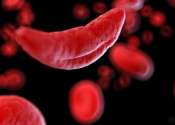New pulmonary arterial hypertension treatment offers hope for patients in advanced stage of disease
A relatively new therapy used to treat pulmonary arterial hypertension in those with mild to moderate disease was found to be effective at preventing death in those with more advanced disease. Results were published on Wednesday, ...
May 29, 2025
0
0









